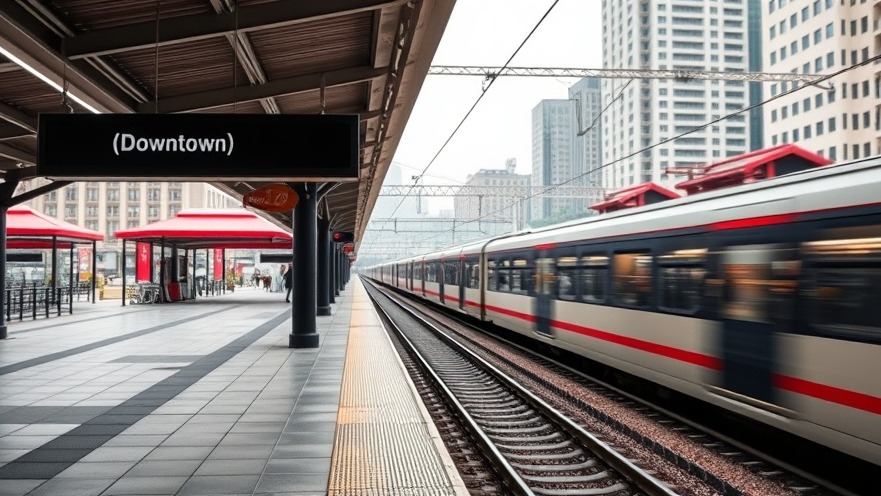
Austin's Downtown Rail Station Closes: What You Need to Know
Starting this Tuesday, commuters relying on Capital Metro's rail service will face significant changes. As construction begins on the Austin Convention Center, the downtown rail station has temporarily closed, leading to a stop at Plaza Saltillo instead. The urgency of this closure was underscored by CapMetro's announcement, highlighting safety concerns as the primary motivator.
CapMetro's representatives assured the public that a bus bridge will operate between Plaza Saltillo and the Downtown Station, which is located on East Fourth Street. "We understand the inconvenience this may cause for customers and appreciate your patience during this time," stated CapMetro on social media. The transit agency has promised to keep the public informed regarding the resumption of service to the Downtown Station.
Big Changes on the Horizon for the Austin Convention Center
As the temporary rail closure unfolds, it coincides with a significant redevelopment initiative at the Austin Convention Center known as "Unconventional ATX." This ambitious $1.6 billion project aims to nearly double the rentable square footage from 365,000 to 620,000 square feet. Such an expansion will not only enhance the utility of the space but is also expected to prioritize accessibility, flexibility, and sustainability.
Officials from the Austin Convention Center Department (ACCD) emphasize that the new facility will feature innovative design elements, including open-air terraces and public outdoor plazas, maximizing the incorporation of natural light. This construction project is poised to create a modern venue that captures the spirit of Austin, accommodating a variety of events and enhancing community engagement.
The Bigger Picture: Impact on Austin's Lifestyle
Austin's growth and transformation into a hub for both business and leisure reflects broader trends throughout the city. As more affluent individuals and families move to the area, concerns over living costs and accessibility grow. According to recent studies, the cost of living in Austin has become a topic of debate, particularly as income disparities in the region seem to widen. For many residents, this transformation impacts their daily lives, and public transport accessibility will be crucial in maintaining a sense of community and belonging.
With the ongoing development and challenges in transportation, residents must weigh the pros and cons of living in Austin. For those considering a move, understanding these dynamics is essential. Exploring both lifestyles – living in Austin versus nearby San Antonio or Dallas – offers a glimpse into the diverse offerings that the Texas capital has, from vibrant cultural events to outdoor adventures. Families may also find benefit in local lifestyle phenomena, such as dog-friendly spaces, increasing visibility of lifestyle influencers, and a robust community-driven environment.
What’s Next for Commuters and Residents?
As construction progresses on the Convention Center, and rail service resumes, commuters should remain informed about transit developments as well as potential changes to their daily routes. It’s more important than ever for residents to engage with local news sources to voice their concerns and ideas regarding city developments. With construction altering the urban landscape, ongoing conversations about transportation, community impact, and inclusivity are vital to nurturing Austin's identity.
This situation highlights the necessity for an adaptive community. While the construction of the new Convention Center may feel disruptive in the short term, it holds the potential for long-term community benefits that can enhance the Austin lifestyle. As residents continue navigating these transitions, sharing stories about local life and advocating for accessible planning will ensure that everyone’s voice is heard.
To keep up with changes in the Austin area and become involved in fostering a vibrant, connected community, consider joining local groups focused on transportation advocacy, attending city council meetings, or participating in design discussions for public spaces.
 Add Element
Add Element  Add Row
Add Row 



 Add Row
Add Row  Add
Add 


Write A Comment